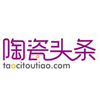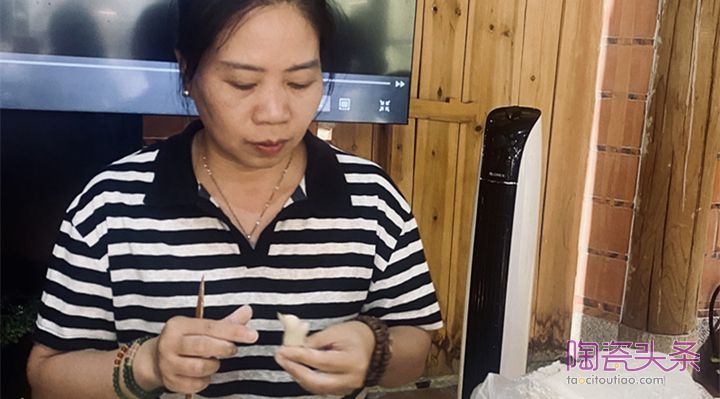外国人眼中的“中国白”|考古眼光中的“中国白” (三)——何翠媚

-
小陶陶
2021-09-13 08:37:46 德化陶瓷文化研究院、陶瓷办1159
13810
编者按:
由柯玫瑰(Rose Kerr)、约翰•盖尔(John Ayers)所著《——德化白瓷》(Blanc de Chine—porcelain from Dehua)于2002年经新加坡亚洲文明博物馆出版,是继唐纳利《——福建德化瓷》之后的一本专门研究德化白瓷的专著,影响甚为深远。
该书收录的都为国外研究德化白瓷的知名学者所撰写德化白瓷研究资料。包括柯玫瑰的“德化器物款识介绍”,海蒂(Heidi Tan)的“鉴赏家探访”,约翰•盖尔的“的影响”,何翠媚(Chuimei Ho)的“考古眼光中的”,郭勒逊(Kenson Kwok)的“德化雕塑结构的一点看法”, 埃娃•施特勒伯(Eva Strober)的“德累斯顿的斯特朗大帝收藏的德化瓷”,以及附录介绍等七个部分,从不同角度介绍了德化白瓷。与此同时,该书收录的160件德化窑精品,为Hickley家藏,后捐赠给新加坡亚洲文明博物馆,是了解、品鉴、研究德化白瓷不可多得的艺术精品。
本栏目将定期精选出相关代表性文章进行翻译,以飨读者。然而,由于作者水平的局限,翻译过程中难免有所错漏,不足之处敬请各位读者提出宝贵意见。
Blanc de Chine in archaeological perspective: a tribute to Donnelly by Chuimei Ho
(翻译:孙延燕)
Distribution
Donnelly dates the earliest blanc de Chine ware to sometime in the beginning of the sixteenth century, an assumption which has not met any challenge. He also suggests that regular export of blanc de Chine only started around AD 1650.Recent archaeological data does not dispute this view. What is important is that through the study of blanc de Chine ware, one can say that the ware took 150 years to mature from an experimental ware -White Ware I-and another 150 years to become marketable in Europe as blanc de Chine ware.
分配
唐纳利将最早的瓷器追溯到16世纪初的某个时候,这个假设没有遇到任何挑战。他还指出,经常性的出口始于公元1650年左右。最近的考古资料并不否认这一观点。重要的是,通过对瓷的研究,我们可以说,瓷从实验性的白瓷(白瓷1号)到成熟需要150年的时间,而又用了150年的时间才让名扬欧洲。
Why it took the Dehua potters so long to expand their market is beyond the scope of this paper. Neither do we have the space to discuss the type of domestic clientele for blanc de Chine wares. The few datable pieces prior to 1650 must have been in Chinese hands at one time, even though the their original owners may never be known.
德化陶工为什么要花这么长时间来开拓市场,这超出了本文的讨论范围。我们也没有空间讨论产品的国内客户类型。1650年以前的少数几件可供查阅的文物肯定曾经在中国人手中,尽管它们的原始主人可能永远不为人所知。
On the whole, not too many pieces of seventeenth-century blanc de Chine have been found in European holdings. Dutch East Indies Company trading ships such as the Oosterland carried limited quantities of blanc de Chine. In 1697 when the Oosterland went down in Table Bay near Cape Town, it carried a Guanyin figure, a cup and a small bowl as well as a pair of incense stick holders in the shape of lions-the type made at Lingdou. Even though final reports on the cargo are still to be published, underwa ter archaeologists are convinced that the few Asian ceramics did not represent the regular cargo. Instead, the Asian ceramics on board were probably smuggled by the crew, since the last few years of the seventeenth century were not a good time for the Company's ceramic trade.
总的来说,在欧洲的藏品中发现的十七世纪并不多。荷兰东印度群岛公司的贸易船,如“奥斯特兰”号,装载了有限数量的瓷器。1697年,当奥斯特兰号在开普敦附近的桌湾沉没时,它装载了那种岭兜窑才有类型:一个观音像、一个杯子和一个小碗以及一对狮子形状的香烛架。尽管关于这些货物的最终报告仍有待发表,但考古学家们确信,为数不多的亚洲陶瓷并不具有代表性。相反,船上的亚洲陶瓷可能是船员走私的,因为17世纪的最后几年对公司的陶瓷贸易来说不是一个好时机。
The Dutch were not alone in bringing blanc de Chine to the Europeans. The Spanish, through their regular Manila-Acapulco sea route, brought blanc de Chine cups to Mexico City: Fragments of an elegant cup with applique plum flowers were recovered from Spanish colonial stratum of Templo Mayor, dated to the late seventeenth century. An intact example with added Mexican silver mount and cover speaks for appreciation of blanc de Chine held by Mexicans. By and large, seventeenth-century blanc de Chine pieces are rare in Europe and the Americas.
荷兰人并不是唯一一个把带到欧洲的人。西班牙人,通过他们的马尼拉-阿卡普尔科航线,把瓷杯带到墨西哥城。17世纪晚期,从西班牙殖民的大神庙那里发现了一个带有梅花贴花的精致杯子的碎片。一个完整加上了墨西哥银座和盖子的杯子,说明了墨西哥人对他们持有的瓷的欣赏。总的来说,十七世纪的在欧洲和美洲很少见。
There is a strong possibility that Augustus the Strong was responsible for popularizing blanc de Chine among Europeans. The 400-piece collection in Dresden was started by the king in the early eighteenth century. No doubt it was the beauty and superb technology of blanc de Chine porcelain that intrigued the German elite and inspired them to buy. But why were duplicates bought in such bulk? The Dresden Inventory shows that, in addition to sets of tableware, in 1721 and 1722 the king bought 12 monkeys, 14 bottles, 18 dogs and 10 dolls. Even though price was an unlikely factor in the kings shopping, it remains a possibility that blanc de Chine was good value compared with other contemporary Asian ceramics. We learn from the excellent records ofthe merchant Lazarus Duvaux that the taste for blanc de Chine had spread to France during the mid-eighteenth century. In 1748, Frenchmen were willing to pay 7 pounds 16 shillings sterling for a pair of blanc de Chine lions. However, a similar pair of lions in mottled blue-and-white glaze from Jingdezhen cost 60 pounds. Apparently Dehua potters priced their products competitively.
很有可能是奥古斯都在欧洲人中推广了瓷器。德累斯顿的400件藏品是国王在18世纪早期开始收藏的。毫无疑问,正是瓷器的美丽和高超的工艺吸引了德国精英,激发了他们的购买欲。但为什么要大量购买复制品呢?德累斯顿的库存显示,除了成套餐具外,在1721年和1722年,国王还购买了12只猴子、14瓶、18只狗和10个洋娃娃,尽管价格不太可能成为国王购物的一个因素,但与其他当代亚洲陶瓷相比,瓷器具有很高价值的可能性仍然存在。我们从商人拉扎鲁斯·杜沃的记录中了解到,18世纪中叶,人们对的喜爱已经蔓延到了法国。1748年,法国人愿意花7英镑16先令买一对狮子。然而,一对来自景德镇的类似的蓝白相间的狮子花了60英镑,显然德化陶工的产品价格很有竞争力。
责任编辑:陈美珠
















